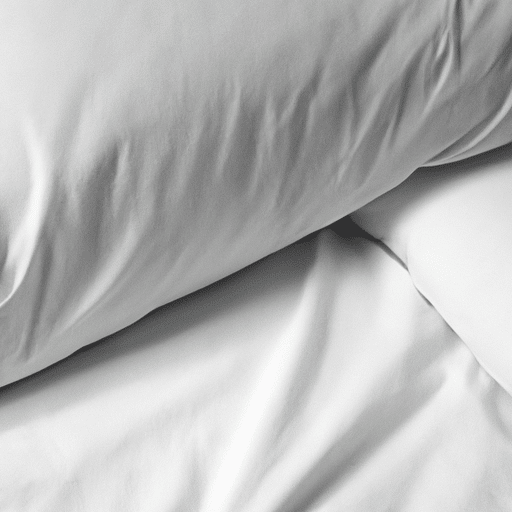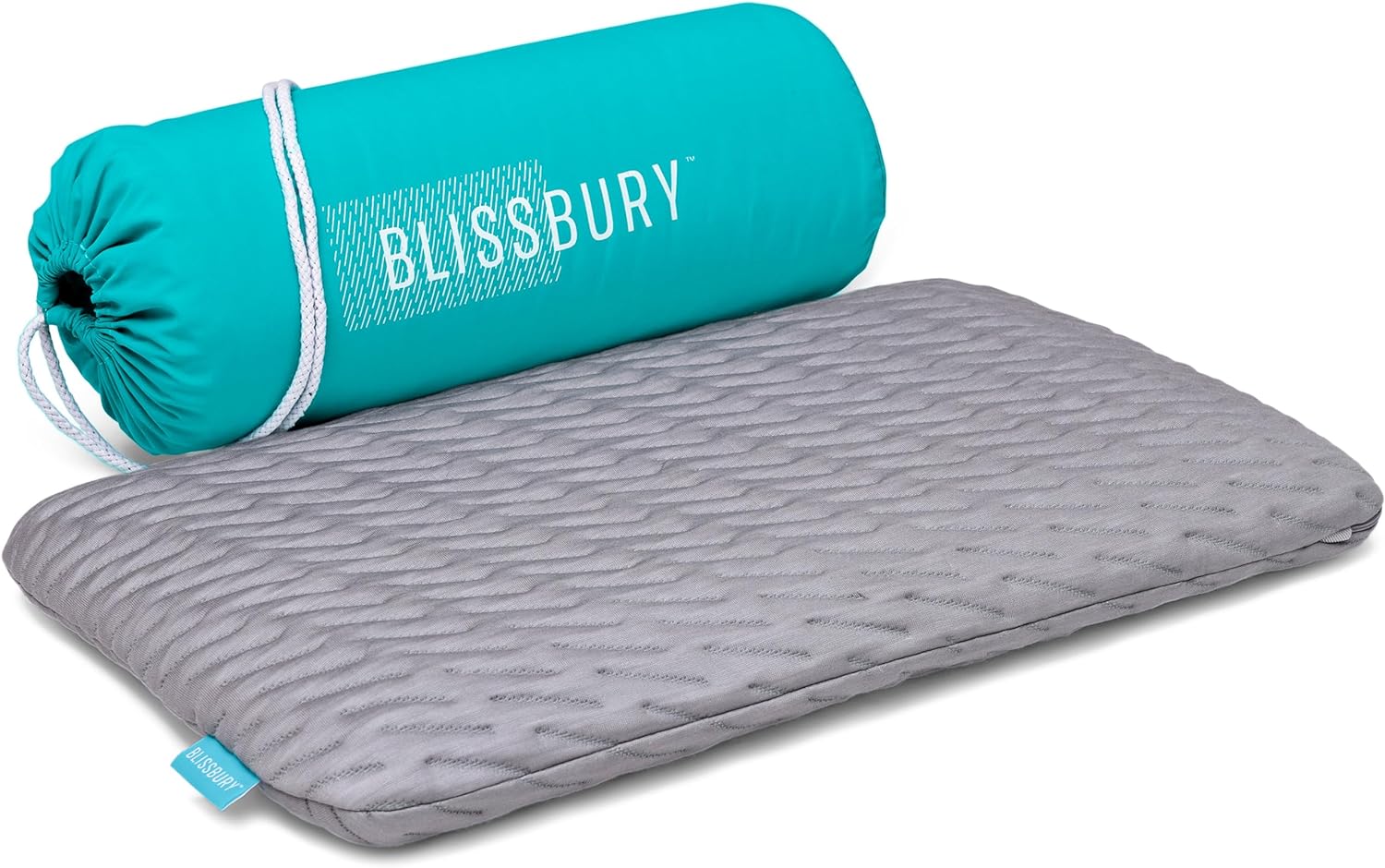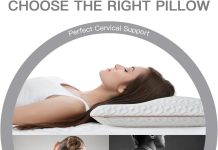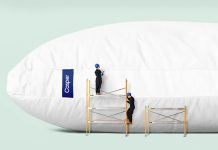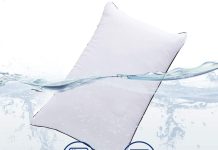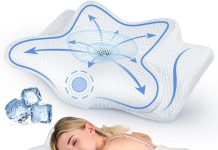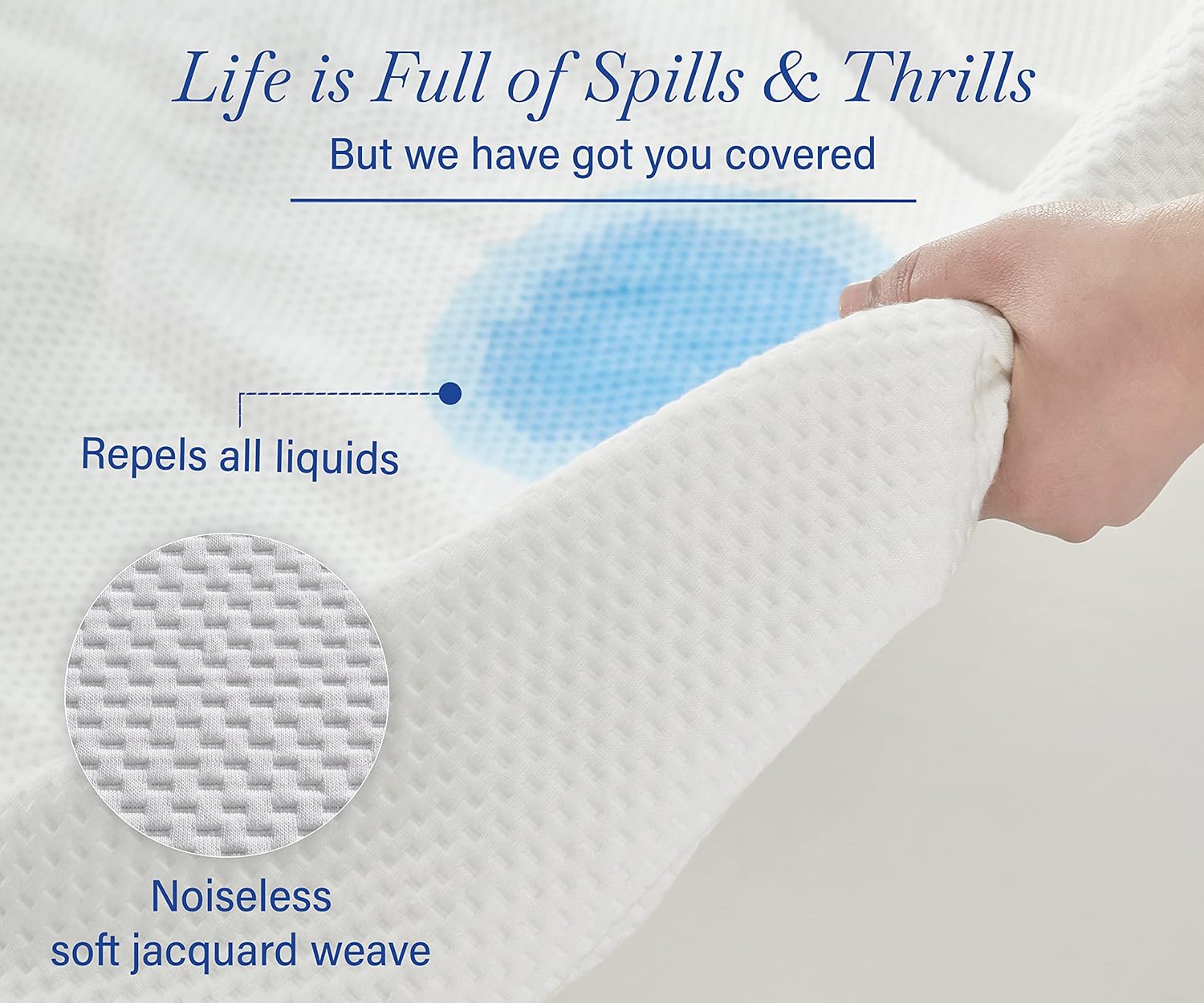There’s nothing quite like the feeling of sinking into a soft, plush pillow at the end of a long day. But have you ever wondered if sleeping without a pillow is actually bad for you? In this article, we’ll explore the potential consequences of ditching the pillow and whether it’s worth sacrificing that cozy comfort for the sake of our health. So, let’s get right into it and explore the pros and cons of sleeping pillow-free!
Review contents
Overview of sleeping without a pillow
Sleeping without a pillow is a practice that has been debated for years. While many people cannot imagine sleeping without the comfort and support of a soft pillow, others find relief and benefits from sleeping pillowless. In this article, we will explore the definition of sleeping without a pillow, the historical background behind this practice, and the various benefits and drawbacks associated with it. We will also discuss important considerations for those who are interested in trying pillowless sleep, expert opinions on the subject, and provide helpful tips for a better sleep experience without a pillow. By the end of this article, you will have a comprehensive understanding of the topic and be able to make an informed decision based on your personal preferences and comfort.
Definition of sleeping without a pillow
Sleeping without a pillow refers to the practice of resting the head and neck directly on the mattress or any other surface without the use of an additional cushion. It involves maintaining a natural alignment of the spine, without the elevation or support provided by a pillow. Some individuals choose to sleep without a pillow permanently, while others may opt for occasional pillowless nights as a way to relieve discomfort or improve their sleep quality.
Historical background of sleeping without a pillow
The history of sleeping without a pillow can be traced back to ancient civilizations, where people would sleep on flat surfaces without any head support. In many traditional cultures, pillows were not used, and people slept on mats or straw beds. Pillows were eventually introduced and became popular as a symbol of comfort and luxury, particularly among the wealthy. However, in recent years, the idea of sleeping without a pillow has gained attention as a way to align the body in a more natural position and alleviate common sleep-related issues.
Benefits of sleeping without a pillow
Improved spinal alignment
One of the key benefits of sleeping without a pillow is improved spinal alignment. By sleeping with the head and neck in a neutral position, without the elevation or tilting caused by a pillow, the spine is allowed to align naturally. This can help alleviate discomfort and promote a healthier posture, reducing the risk of developing spinal issues or exacerbating existing conditions.
Reduced neck and back pain
Sleeping without a pillow can also help reduce neck and back pain. Many individuals experience pain and stiffness in these areas due to improper spinal alignment caused by pillows that do not adequately support the head and neck. By sleeping without a pillow, the weight of the head is evenly distributed, relieving pressure on the neck and back and reducing pain and discomfort.
Prevention of wrinkles and acne
Another surprising benefit of sleeping without a pillow is the prevention of wrinkles and acne. Traditional pillows can cause the skin to crease, leading to the formation of wrinkles over time. Additionally, pillows can harbor dirt, oils, and bacteria, contributing to the development of acne. By eliminating the use of a pillow, the skin can breathe freely and remain in a more natural and hygienic state, reducing the risk of developing wrinkles or acne.
Enhanced circulation
Sleeping without a pillow can also promote enhanced circulation. Pillows that are too thick or firm can compress the blood vessels in the neck, leading to reduced blood flow. By sleeping without a pillow, the head and neck are in a more neutral position, allowing for unhindered blood circulation. This can benefit overall health, improve oxygen flow to the brain, and prevent the numbness or tingling sensation often experienced when blood flow is compromised.
Better breathing
For those who struggle with respiratory issues or simply wish to improve their breathing during sleep, sleeping without a pillow can be beneficial. Traditional pillows can sometimes obstruct airflow, especially for individuals who sleep on their back. By sleeping without a pillow, the airways remain open, allowing for better and uninterrupted breathing throughout the night. This can enhance sleep quality and reduce the risk of sleep-related breathing disorders.
Reduced snoring and sleep apnea symptoms
Snoring and sleep apnea, conditions that can significantly disrupt sleep for both the affected individual and their sleeping partner, can be alleviated by sleeping without a pillow. By keeping the airways open and allowing for easier breathing, the likelihood of snoring or experiencing sleep apnea symptoms is reduced. This leads to a quieter and more restful sleep for everyone involved.
Drawbacks of sleeping without a pillow
Lack of support for neck and head
One of the main drawbacks of sleeping without a pillow is the lack of support for the neck and head. Pillows are designed to provide cushioning and maintain the natural curvature of the neck, ensuring proper support and preventing strain. Without a pillow, the head and neck may experience discomfort, muscle strain, or misalignment, particularly for individuals who sleep on their side or back.
Increased risk of certain health issues
Sleeping without a pillow may also increase the risk of certain health issues. For individuals with conditions such as acid reflux or GERD, elevating the head using a pillow can be beneficial in preventing stomach acid from flowing back into the esophagus. Additionally, pregnant women may require the use of pillows to support their growing bellies and relieve pressure on their hips and lower back. It is important to consider individual health needs and consult with a healthcare professional before opting for pillowless sleep.
Discomfort and muscle strain
While some individuals find sleeping without a pillow to be comfortable, others may experience discomfort and muscle strain. The absence of a pillow can cause the head and neck to rest in unnatural positions, leading to soreness and stiffness upon waking. It may take time for the body to adjust to sleeping without a pillow, and some individuals may find the transition challenging or uncomfortable.
Aggravation of certain sleep disorders
For individuals with existing sleep disorders, such as sleep apnea or snoring, sleeping without a pillow may aggravate their symptoms. Proper elevation of the head using a pillow can help alleviate these conditions by keeping the airways open and promoting easier breathing. It is important to consider the specific sleep needs and consult with a healthcare professional before making any changes to the sleep routine.
Considerations for sleeping pillowless
Ideal sleep positions without a pillow
When opting for pillowless sleep, it is essential to find the ideal sleep positions that provide support and comfort for the head and neck. For back sleepers, placing a small pillow or rolled-up towel under the neck can help maintain proper alignment. Side sleepers can benefit from hugging a body pillow or placing a thin, supportive cushion between the knees to alleviate pressure on the hips and maintain spinal alignment. Stomach sleepers may find it more challenging to maintain proper spinal alignment without a pillow, but can try sleeping with a thin, flat pillow or without one altogether.
Choosing the right mattress
To complement pillowless sleep, choosing the right mattress is important. A mattress that is too firm or too soft may not provide adequate support for the spine, leading to discomfort or misalignment. Opting for a medium-firm mattress can help maintain proper spinal alignment and provide cushioning for the body. It is also recommended to consider individual preferences and comfort levels when selecting a mattress.
Finding a pillow alternative
For individuals who find it difficult to adjust to sleeping without a pillow but still wish to experience the benefits of pillowless sleep, there are alternatives available. Memory foam pillows or cervical pillows, designed to support the natural curves of the neck, can provide the necessary support while still allowing for a more natural sleeping position. These pillows can help gradually transition to pillowless sleep or be used occasionally to alleviate discomfort.
Gradually transitioning to pillowless sleep
For those interested in pillowless sleep, it is often recommended to transition gradually. This allows the body to adapt to the changes and minimizes the discomfort that may arise from sudden changes in sleep posture. Starting with shorter periods of pillowless sleep and gradually increasing the duration can help the body adjust more easily. It is also important to listen to the body’s signals and consult with a healthcare professional if any concerns or difficulties arise.
Expert opinions on sleeping without a pillow
Research findings on sleeping pillowless
Although there is limited scientific research specifically focused on sleeping without a pillow, several studies have examined the effects of different sleep positions and pillow types on various health conditions. These studies generally suggest that excessive pillow height or poor pillow support can lead to discomfort, poor sleep quality, and increased risk of musculoskeletal issues. However, more research is needed to fully understand the effects of sleeping without a pillow and its impact on overall health.
Expert recommendations
Many sleep experts recommend experimenting with different sleep positions and pillow options to find what works best for each individual. They emphasize the importance of maintaining proper spinal alignment and ensuring adequate support for the head and neck during sleep. While some individuals may benefit from sleeping without a pillow, it is essential to prioritize comfort and individual preferences to achieve optimal sleep quality.
Common misconceptions about sleeping without a pillow
There are various misconceptions surrounding the practice of sleeping without a pillow. Some believe that pillowless sleep is the only way to achieve proper spinal alignment, while others think it is a universal solution for all sleep-related issues. It is important to recognize that each individual has unique sleep needs and preferences. Sleeping without a pillow may be beneficial for some, but not for others. The key is to find what works best for personal comfort and overall well-being.
Tips for better sleep without a pillow
Maintaining proper sleep posture
Regardless of whether one sleeps with or without a pillow, maintaining proper sleep posture is crucial for a good night’s sleep. This involves keeping the spine in a neutral position and avoiding excessive bending or twisting. Practicing good sleep posture can help prevent discomfort and minimize the risk of musculoskeletal issues. It is important to be mindful of sleep position and make adjustments as necessary to maintain proper spinal alignment.
Supporting the neck and spine
Even without a pillow, it is possible to support the neck and spine during sleep. Engaging in exercises and stretches that target the neck and back muscles can help strengthen them and alleviate discomfort. Additionally, using a supportive mattress and considering alternative pillow options, such as memory foam pillows or cervical pillows, can provide the necessary support for the head and neck, promoting a more comfortable and restful sleep experience.
Using additional sleep aids
For individuals who find it challenging to sleep without a pillow, using additional sleep aids can help enhance comfort and support. Body pillows, which can be placed between or under the legs, can provide additional support and alleviate pressure on the hips and lower back. Mattress toppers or cushioned overlays can also help provide cushioning and enhance the overall sleep experience. Experimenting with different sleep aids can help find the ideal combination for optimal comfort.
Creating a relaxing sleep environment
In addition to sleep posture and support, creating a relaxing sleep environment is essential for a good night’s sleep. This includes keeping the bedroom cool, dark, and quiet, as well as establishing a consistent sleep routine. Engaging in relaxation techniques, such as deep breathing or gentle stretching before bed, can also help prepare the body and mind for sleep. By creating a conducive sleep environment, individuals can further enhance their sleep quality, regardless of whether they sleep with or without a pillow.
Personal experiences and testimonials
Individual perspectives on sleeping pillowless
Personal experiences with sleeping without a pillow can vary widely. Some individuals report significant improvements in sleep quality, reduced pain, and increased comfort after eliminating the use of a pillow. Others may find it challenging to adjust and experience discomfort or dissatisfaction with pillowless sleep. It is important to consider individual perspectives and recognize that what works for one person may not work for another.
Success stories and challenges
Success stories of individuals who have successfully transitioned to pillowless sleep are plentiful. Many individuals have reported improved sleep quality, reduced pain, and a feeling of overall well-being after making the switch. However, it is essential to acknowledge that challenges and difficulties may arise during the transition. Some individuals may experience initial discomfort or difficulty finding the right sleep position. It is important to be patient, listen to the body, and seek guidance from healthcare professionals if necessary.
Tips from those who have adjusted to pillowless sleep
For individuals considering pillowless sleep, tips from those who have successfully adjusted can be invaluable. Gradually transitioning, experimenting with different sleep positions, and being open to alternative pillow options are common recommendations. Listening to the body and giving it time to adapt is also crucial. It is important to remember that individual experiences may vary, and what works for one person may not necessarily work for another.
Conclusion
In conclusion, the decision to sleep with or without a pillow is a subjective one and depends on individual preference and comfort. Sleeping without a pillow offers various potential benefits, including improved spinal alignment, reduced neck and back pain, prevention of wrinkles and acne, enhanced circulation, better breathing, and reduced snoring and sleep apnea symptoms. However, there are also drawbacks to consider, such as the lack of support for the neck and head, increased risk of certain health issues, discomfort and muscle strain, and potential aggravation of pre-existing sleep disorders.
When considering pillowless sleep, it is essential to take into account ideal sleep positions, choosing the right mattress, finding suitable pillow alternatives, and gradually transitioning to pillowless sleep. It is also important to seek expert opinions and research findings, while being aware of common misconceptions surrounding the practice. Tips for better sleep without a pillow include maintaining proper sleep posture, supporting the neck and spine through exercises and alternative sleep aids, and creating a relaxing sleep environment.
Ultimately, personal experiences and testimonials play a significant role in the decision-making process. While some individuals have successfully adjusted to pillowless sleep and experienced positive outcomes, others may find it challenging or uncomfortable. It is crucial to prioritize individual preference and comfort, recognizing that what works for one person may not work for another. By considering the pros and cons, listening to the body, and seeking guidance when needed, individuals can make informed decisions about sleeping with or without a pillow and strive for a better sleep experience overall.

